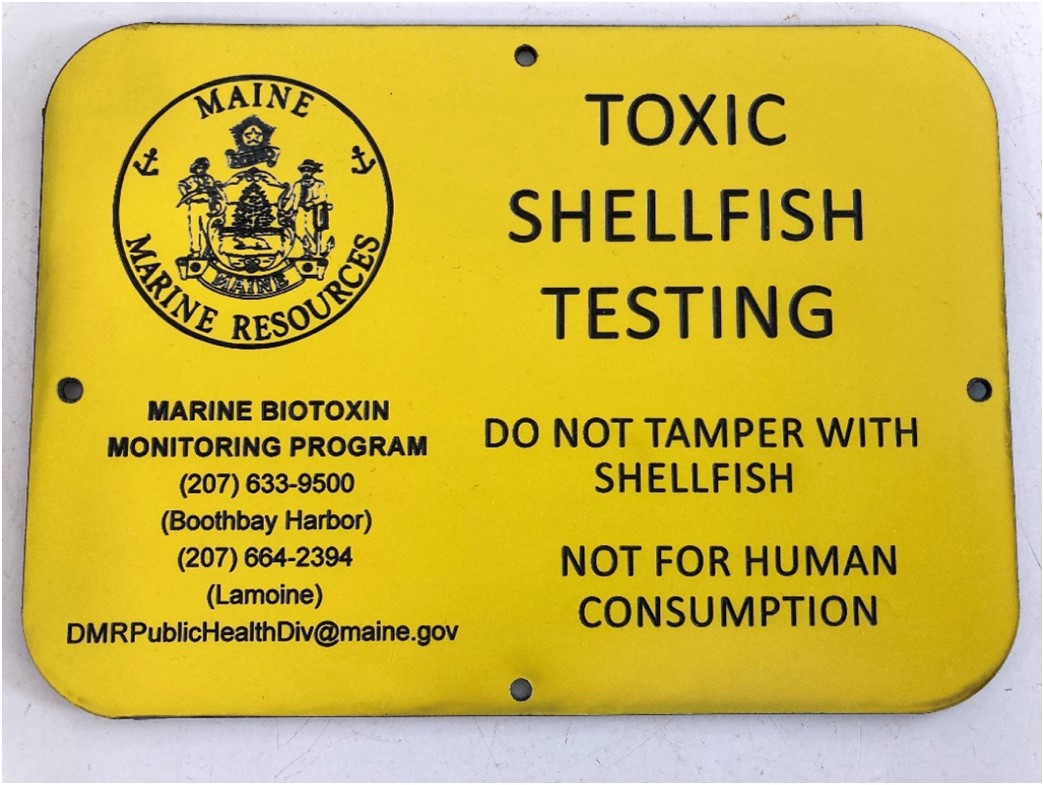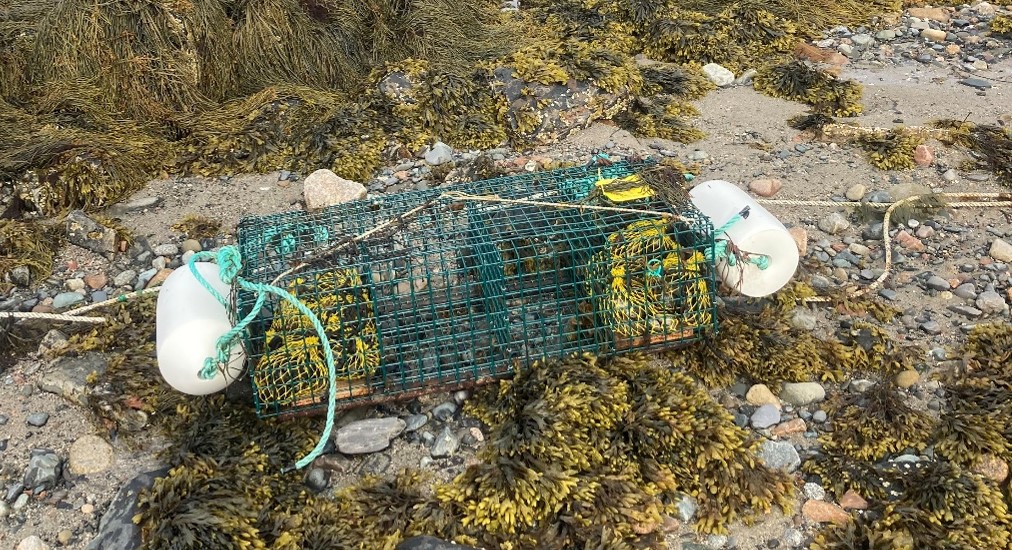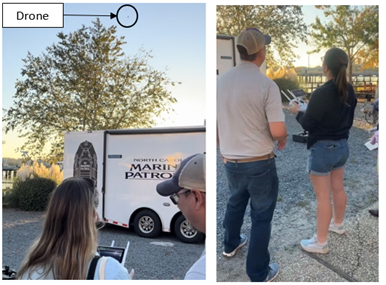Published on March 12, 2024.
Index
- Effective Engagement with the Aquaculture Leasing and Licensing Process
- Municipal Shellfish Committee
- Shellfish Dealer and Retail Seafood License Renewal Time is Here!
- Coping with Tides: How DMR Samples for Shellfish Biotoxin
- Website Updates: A Self-Service Overview
- Expanding Knowledge and Awareness
- Municipal Marine Resource Management Training
Effective Engagement with the Aquaculture Leasing and Licensing Process
By Amanda Ellis, Aquaculture Division Director
Many stakeholders want to provide feedback on pending aquaculture applications but share with us that the process can be challenging to navigate. This is something we are working to address in a variety of different ways. As we work on improving engagement, below are some strategies you can utilize when participating in the leasing and licensing process.
Is it a lease or a Limited Purpose Aquaculture (LPA) license? Knowing the type of proposal under consideration is important because the opportunities for feedback vary by application. For example, LPAs are annual licenses that cannot exceed 400 sqft in size and have restrictions on the types of allowable gear and species. Given their limited scale, LPAs are reviewed through a ‘permit-by-rule’ process and there are no public hearings. Standard leases may be issued for up to a 20-year term and may be up to 100 acres in size. There are always public hearings on standard leases. The application and respective notice will list the type of site being applied for.
Visit our webpage: Once you know the type of application, check out our newly redesigned public participation in aquaculture webpage. The content on this webpage is intended to provide stakeholders with a comprehensive overview of participation opportunities by application type. This is a good place to start if you want to know more about what type of review process applies to the proposal. We also developed a separate page for municipal participation (also linked below) as the leasing and licensing process provides towns/cities with some additional opportunities for engagement.
Know the decision criteria: All proposals are evaluated against a set of decision criteria. The criteria include considerations related to commercial fishing, navigation, ingress, and egress of riparian owners among others. The criteria were established by Maine’s Legislature and are what DMR must legally consider when evaluating a proposed site. Therefore, if you plan on providing feedback, please make sure it is specific to one or more of the criteria. The web pages linked below also include the relevant decision criteria by application type.
Remember deadlines: All proposals have important deadlines that stakeholders need to follow to provide feedback. For example, experimental leases have comment deadlines, and hearings have deadlines to register to participate if you plan on offering testimony or asking questions. These deadlines are listed in each respective notice. Missing deadlines could limit your ability to participate.
Over the next several months we’ll continue to work on improving outreach. We are also looking forward to participating in a variety if initiatives in 2024 including the Municipal Marine Resource Management Trainings. In the meantime, if you have questions about aquaculture, please email DMRaquaculture@maine.gov. This account is checked regularly, and you will receive a response.
Public participation page: https://www.maine.gov/dmr/aquaculture/public-participation-in-aquaculture-leasing
Municipal participation page: https://www.maine.gov/dmr/aquaculture/municipal-participation-in-aquaculture
Municipal Shellfish Committee LPAs
By Meredith White, Marine Resource Scientist IV
The Department heard feedback from the 2022 Shellfish Listening Sessions that changes to the Limited Purpose Aquaculture (LPA) licensing process could help make them more reflective of the type of work conducted by Municipal and Regional Shellfish Committees. Over the last several months, statutory and regulatory changes have been made in response to this feedback. For example, LPAs can now be held in the name of a Municipal or Regional Shellfish Committee instead of only in an individual’s name; and the annual fee and educational requirement are now waived for LPAs held by a Municipal or Regional Shellfish Committee. Additionally, scientists in the Nearshore Marine Resources Program are available to provide technical assistance for Shellfish Committees, as they work on their Municipal LPA application.
The Aquaculture Division and Nearshore Marine Resources Program have been working closely together to make the process of applying for an LPA more straightforward for Shellfish Committees who want to utilize an LPA to help achieve their shellfish conservation goals. The LPA application has been revised to be specific for Municipal Shellfish Conservation activities, and some of the associated LPA requirements have changed. For example, instead of requiring Shellfish Committees to purchase an Aquaculture Harvester License to remove shellfish from their LPA, the Nearshore Program will issue Transplant Permits through the same process Shellfish Committees are already familiar with. We were very excited to roll out these changes and we look forward to working with Shellfish Committees who are interested in obtaining an LPA for their programs!
Shellfish Dealer and Retail Seafood License Renewal Time is Here!
By Melinda Cook, Senior Shellfish Inspector
DMR dealer and retail licensing season is almost upon us! All 2023 shellfish dealer and retail seafood licenses expire on March 31st.
2024 dealer and retail licenses will become available for purchase on our licensing website LEEDS (www.maine.gov/dmrleeds) on or after February 1st. The license year for these is April 1, 2024, to March 31, 2025.
New Dealers and Retailers
Any license purchased before February 1,2024, will be for the 2023 license year and will expire on March 31, 2024. IMPORTANT: If you are purchasing a NEW dealer or retail seafood license after February 1st and before March 31st, you will have to pay close attention to the dropdown boxes (example below):
- NEW Dealers/Retailers planning to start in April 2024 or later, select “Next Year”
- NEW Dealers/Retailers starting before April 2024, select “Current Year”
- Then go back in and renew before March 31, 2024.

Got Questions? We've got Answers!
We get many questions about which shellfish licenses are needed for a multitude of different scenarios, both in and out of state. Below are some great tools by the Gulf of Maine Research Institute to help decide which licenses you need to sell your aquacultured shellfish.
- The Maine Aquaculturist's Pocket Guide: Selling Shellfish
- The Maine Aquaculturist's Guide to Selling Shellfish Flow Chart
These tools give a general idea of the most common scenarios for selling your own aquacultured shellfish. If you want to buy shellfish from harvesters, aquaculturists, or other dealers; do something that isn’t covered above, or just want to confirm that you have what you need, please to reach out to your area DMR Shellfish Inspector or the Shellfish Inspection Program Supervisor. Contact information can be found here: https://www.maine.gov/dmr/about-us/staff-directory
- ME/NH Border to Kennebec River – Aidan Lurgio
- Kennebec River to Bagaduce River – Melinda Cook
- Bagaduce River to ME/Canadian Border – Richard Riddell
- Shellfish Inspection Program Supervisor – James Becker
If you have any trouble with the LEEDS site, please call Licensing at 207-624-6550, Option 2.
Coping with Tides: How DMR Samples for Shellfish Biotoxin
By Kevin Lachapelle, Marine Resource Specialist II
While exploring the coastline of Maine, it is not uncommon to find pieces of gear washed up on shore from Maine’s commercial marine harvesting industries such as old lobster traps, lengths of line, and buoys. Sometimes, in certain places, you may come across some gear that is in better-looking shape and seems to have been placed there on purpose. You may also see yellow signs attached to this gear indicating that this equipment belongs to the Maine Department of Marine Resources Marine Biotoxin Monitoring Program, along with warnings of “Toxic Shellfish Testing” and “Do not tamper with shellfish – Not for human consumption”. The signs may be a little scary and lack an explanation for what is happening at these sites, so please allow me to explain a bit.
The DMR’s Bureau of Public Health operates a shellfish biotoxin monitoring program to prevent illnesses from eating shellfish that contain toxic compounds produced by several species of naturally occurring phytoplankton. A major component of the monitoring program is testing shellfish from all along the Maine coast for these toxins. While several different kinds of shellfish (soft shell clams, quahogs, scallops, etc.) are tested throughout the biotoxin season, the main species used for monitoring toxicity levels are blue mussels (Mytilus edulis). Blue mussels occur naturally throughout the Maine coast and live in the intertidal zone between high and low tides, which means our mussel collecting schedules have typically been dictated by the tides. On top of having to sample around tides, the blue mussel population along the Maine coast has been on the decline, forcing us to spend more time searching for mussels to test.
In an effort to alleviate sampling schedules where we rush to a site at low tide and scramble to find enough mussels to test before rushing to the next site (hopefully before the tide comes in), we have started to use cages similar in appearance to lobster traps, attached to fixed points (shore, docks, anchors) to store mussels for easy collection. These “sleeper cages” are placed in the intertidal zone and stocked with presorted bags of mussels. They are also rigged up so that even at high tide, the cages can be pulled into and accessed from shore, and then returned to the intertidal zone. These setups were successfully used at several of our primary monitoring sites during the 2023 biotoxin season, and we may expand their use to other sites in future seasons. So, if you happen to come across a lobster trap on the beach that is tied off to some rocks or anchors, and is full of bags of mussels, there is no need to worry. Just leave the cage as you see it, and if you are curious, please give us a call at the number you see on the TOXIC SHELLFISH TESTING plate, and someone will be able to give you more information about that particular site.


Website Updates: A Self-Service Overview
By Kelsey Woodhead, Marine Resource Scientist II
There are some recent and upcoming changes to the Shellfish Sanitation and Management page on the DMR website that allow the public to more easily access data, reports, and closure information. Biotoxin closures and emergency closures (related to floods, oil spills, etc.) are now displayed on the Interactive Shellfish Closure Map along with the bacterial and municipal conservation closures. On the same page as the Closure Map, a link to the Maine DMR Open Data Portal can now be found. Shellfish water quality data can be located by selecting “Shellfish” and scrolling down to “MaineDMR Public Health – Shellfish Water Quality Data”. Bacterial monitoring data from every active and investigative station can be searched for, reviewed, and downloaded here. It is a five-year dataset that is updated monthly and can be downloaded to a CSV file by clicking the download icon just under the filter icon. Data can be filtered (pictured below) to display specific criteria including growing area and station number; the date and time can be sorted by double-clicking the “Sample_Datetime” column to show the most recent data first. Sanitary survey reports are also becoming available on the website and can be found here: Growing Area Program: Water Quality. These reports review 12 years of data for each shellfish growing area and include information covering shoreline surveys, water sample scores, and analysis of weather conditions, tides, and currents that could influence the dispersal of pollutants within the growing area.
The addition of an interactive phytoplankton web map and biotoxin forecast is another fairly recent update to the website. The interactive map and associated graph allow users to see the progression of different phytoplankton blooms throughout the year. The paralytic shellfish poison (PSP) forecast, which was developed by Bigelow Laboratory for Ocean Sciences, uses weekly DMR shellfish toxicity data as well as environmental data to predict which areas could expect to see PSP toxins in levels high enough to warrant closure. This forecast is a prediction, not a guarantee, and is not used by DMR to make shellfish closures. Phytoplankton data for the current year and archived phytoplankton data can also be viewed and downloaded on this site.
Lastly, a quick shout-out to Ben Wahle and Jill Macleod for their work on the website through the years! Thanks also to Bryant Lewis and David Miller for adding sanitary survey reports to the website and to Bigelow for their PSP forecast contribution.
Expanding Knowledge and Awareness at the 73rd Annual Mid-Atlantic Interstate Seafood Seminar and The Gulf and South Atlantic Shellfish Conference
By Emily Cyr, Marine Resource Specialist
In November, members of the Bureau of Public Health, specifically those involved in the Water Quality and Aquaculture Programs, actively participated in the 73rd Annual Mid-Atlantic Interstate Seafood Seminar and the Gulf and South Atlantic States Shellfish Conference. Hosted in Wilmington, North Carolina, this conference proved to be an invaluable opportunity for our staff to engage with professionals from diverse backgrounds. The informational sessions facilitated networking among states and offered a comprehensive exploration of public health and aquaculture through the lens of local marine patrol, college students, researchers, FDA representatives, and local harvesters.
The multi-state conference featured informative sessions covering FDA and ISSC program updates, shellfish handling and submergence in aquaculture, ISSC laboratory methods, and the method approval processes. Topics such as Harmful Algal Bloom (HAB) toxins in the southeast, vibrio illness investigations, and general updates were also covered. Of particular interest to our team were discussions around laboratory methods and approval processes that will help with expanding vibrio and toxin testing within the laboratory program. The FDA is offering national training courses in 2024, accessible to state agencies, designed to enhance staff expertise in these areas. Another notable development is the design of a new website for the East Coast Shellfish Growers Association (www.ecsga.org). This association, established to represent the needs of aquaculture and the environment from Maine to Texas, serves as a valuable resource for the state, industry, and anyone interested.
Furthermore, breakout sessions at the conference offered our staff hands-on experience and insight into different tools employed by other states, including demonstrations of RAFT MAP and drone technologies. Participation in conferences of this nature enriches our staff’s understanding of the diverse approaches adopted by states and regulatory agencies in addressing public health and aquaculture-related challenges. Funding for travel and training was provided by the Milk and Shellfish Grant Program, as administered by the Association of Food and Drug Officials (AFDO; https://www.afdo.org/grants/msgrants/).

Municipal Marine Resource Management Training
By William Fearn, Research and Planning Associate II
As part of our ongoing goal to address the topics assigned to the DMR Bureau of Public Health and Aquaculture through the 2022 Municipal Shellfish Management meetings (discussed in our 2023 Summer Newsletter), we are continuing to work on the list generated by the Shellfish Advisory Council (ShAC). Here is the updated list starting with the most recent developments.
New developments
- Near Real-Time Water Quality Data - Water quality staff have created a workflow that allows water quality station data to be published on the DMR Open Data Portal monthly. Data is published as a downloadable spreadsheet which will include historic data from the preceding five years. Please email DMRPublichealthdiv@maine.gov if you would like assistance in accessing these data.
- Municipal Marine Resource Management Training – The training is being scheduled for July 2024. It will be focused on providing tools and information to those who help manage municipal marine resources. Topics will include warden hiring, annual reporting, the aquaculture leasing process, water quality management, conservation, the role of the Shellfish Advisory Council, and much more. This training is intended for anyone who participates in Municipal Marine Resource Management including but not limited to municipal officials, resource committee members, shellfish conservation wardens, harbor masters, etc. More information on the dates and locations will be advertised via our Gov Delivery System, sign up for the Public Health and Safety General Information list here: https://public.govdelivery.com/accounts/MEDMR/subscriber/new.
Upcoming Developments
- Municipal Shellfish Conservation Warden Continued Education – DMR is working to create a ride-along program for MSCW’s to continue their training throughout the year. This will be an optional training program for new and experienced wardens to ride along with DMR-approved mentors for hands-on field experience.
- Economic impact study – DMR has signed a contract with the Gulf of Maine Research Institute to study the economic impact of shellfish harvesting in the state of Maine.
Updates to past developments
- Mini Grants – DMR will continue to offer mini-grants that will help improve municipal management and conservation programs. The current proposal deadline is March 3, 2024, with funding starting on May 1, 2024.
- Regional Shellfish Meetings – We continue to organize the opportunity for Harvesters, Municipal Officials, and industry members to get together in their regions (Southern, Central, and Eastern) and discuss ideas, concerns, and solutions about their programs. DMR participates in these meetings as a facilitator and listener, only providing feedback or comments when requested. The second round of these meetings happened in the fall of 2023.
- Nearshore Marine Resource Management – DMR has hired three additional Marine Resource Scientists to the Nearshore Marine Resources Program (formerly Shellfish Management Program). This increased capacity for providing better coverage of the Maine coast for municipal shellfish co-management, as well as state-level management of marine worms, seaweed, mussels, periwinkles, whelks, and subtidal resources, with a new focus on considering management strategies in the context of climate change.
- Gov Delivery – We continue to grow our public outreach and provide better access to resources we already have available to those who want them. The best way to stay informed is through our Gov Delivery system.
- Improved Communication - Increased in-person meeting presence by the Nearshore Marine Resource Scientists and Growing Area Managers (water quality) – staff have been required to attend at least one town shellfish meeting per year unless the town indicates it is not necessary. Staff may attend more by request.